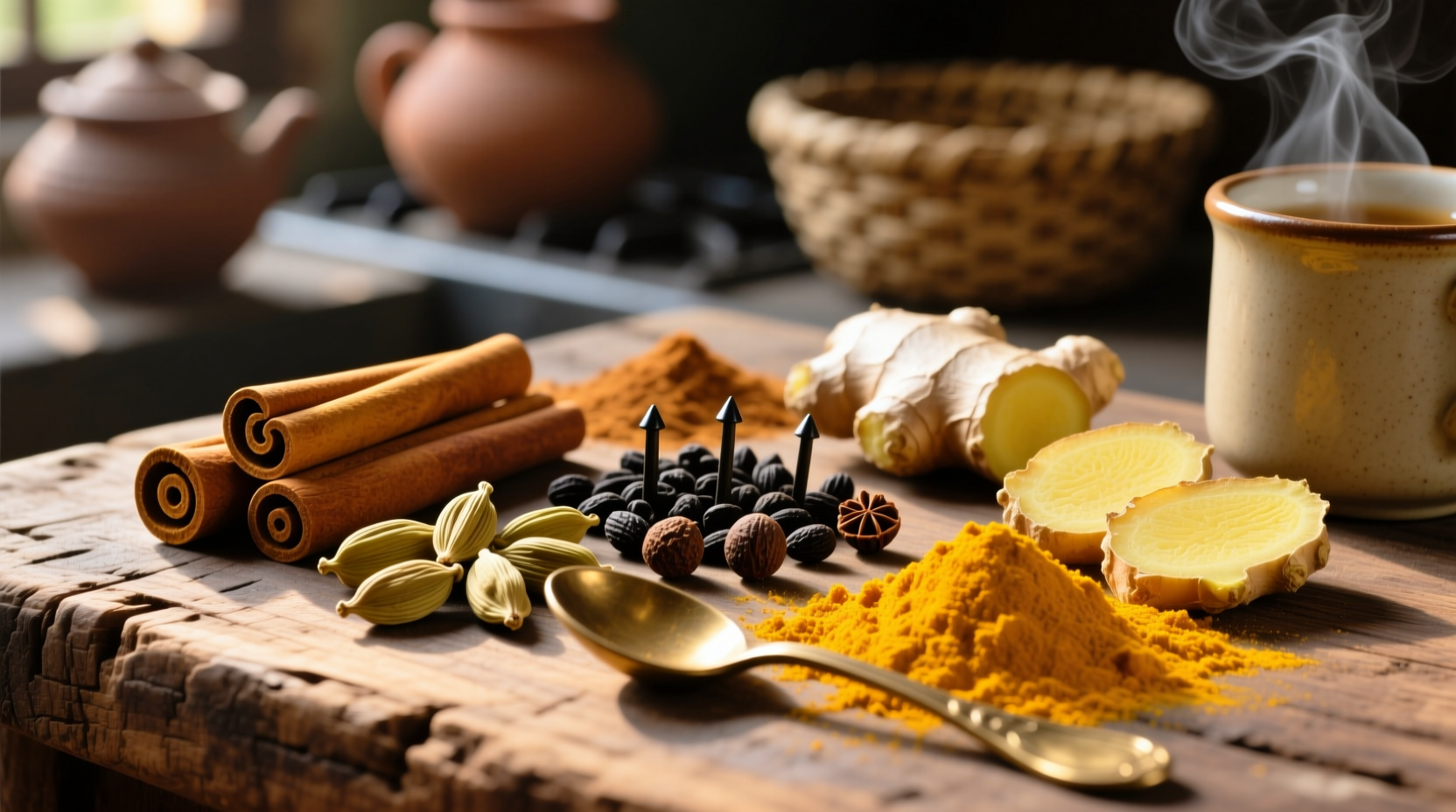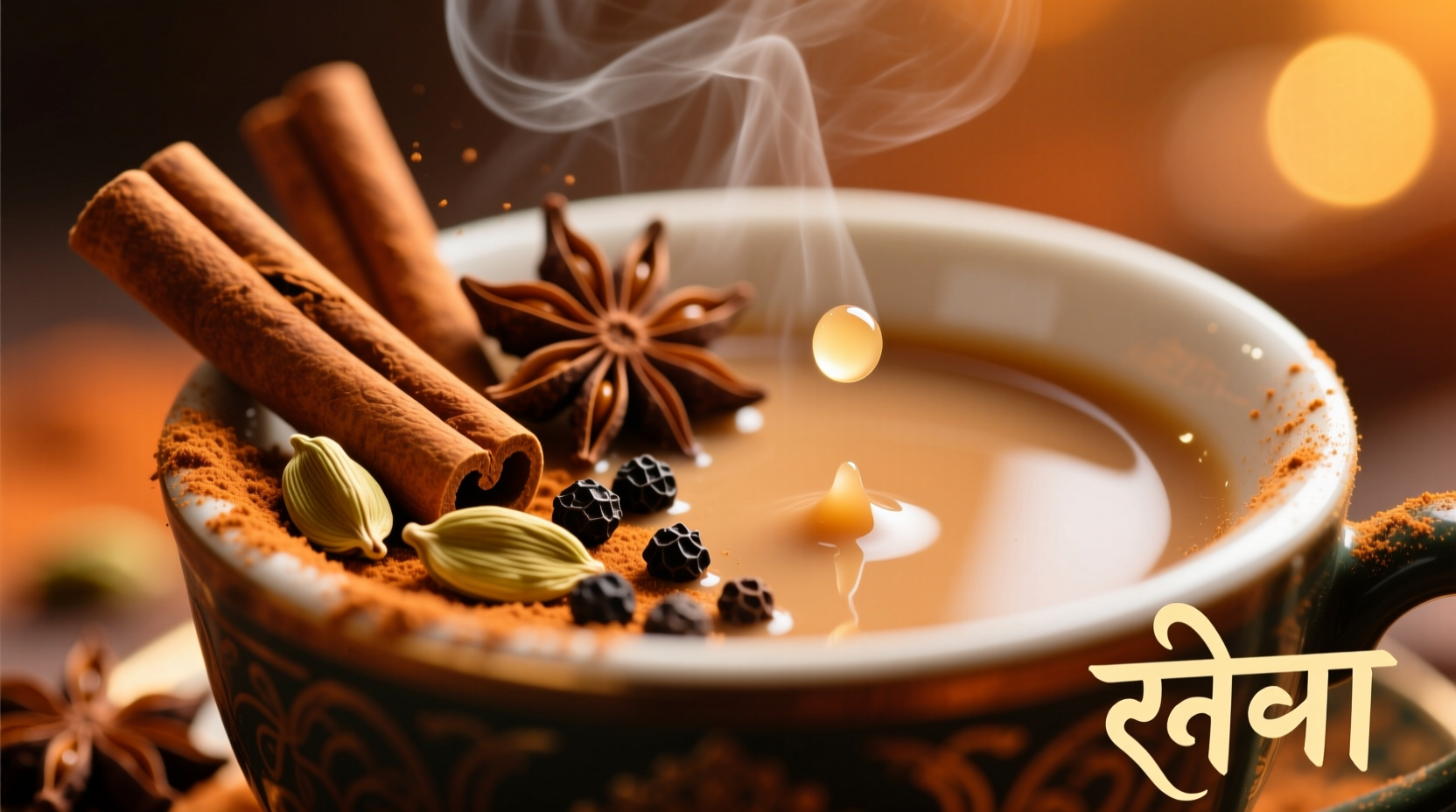Your Complete Guide to Authentic Chai Spices
Creating genuinely flavorful chai requires more than just tossing spices into tea. The magic happens through precise combinations, proper preparation techniques, and understanding how each spice contributes to the final experience. Whether you're a chai novice or looking to refine your technique, this guide reveals what makes traditional masala chai exceptional.
The Essential Spice Framework
Traditional Indian chai follows a carefully balanced formula where each spice serves a specific purpose. Unlike commercial "chai spice" blends that often oversimplify, authentic masala chai uses fresh spices in precise ratios that create harmony rather than competition.
| Spice | Traditional Proportion | Flavor Profile | Primary Function |
|---|---|---|---|
| Green Cardamom | 3-4 pods per cup | Floral, citrusy, slightly sweet | Primary aromatic foundation |
| Fresh Ginger | 1/2 inch per cup | Pungent, warm, slightly spicy | Digestive aid, heat foundation |
| Cinnamon | 1/2 inch stick per cup | Warm, sweet, woody | Balances heat, adds sweetness |
| Cloves | 1-2 per cup | Intense, sweet, slightly bitter | Depth, antiseptic properties |
| Black Pepper | 2-3 grains per cup | Sharp, pungent, warming | Enhances bioavailability |
| Fennel Seeds | 1/4 tsp per cup | Sweet, licorice-like | Digestive balance, aftertaste |
This traditional spice framework has evolved over centuries to create chai that's simultaneously warming, aromatic, and balanced. The proportions matter significantly—too much clove overwhelms, while insufficient ginger creates flat flavor.
Why These Specific Spices Work Together
The chemistry behind chai's spice synergy explains why certain combinations endure. When properly prepared, these spices create compounds that enhance each other's flavor profiles through a process called flavor layering.
Ginger's gingerols interact with cardamom's cineole to create a warming sensation that feels deeper than either spice alone. Black pepper's piperine increases the bioavailability of other compounds, making the health benefits of turmeric (sometimes added) and other spices more effective.
Milk's fat content is crucial—it extracts fat-soluble compounds from spices that water alone cannot. This explains why authentic chai always includes milk, as the lipids capture and carry spice flavors that would otherwise remain trapped in the tea leaves.

Regional Variations Across India
Chai isn't monolithic across India—regional variations reflect local agriculture, climate, and cultural preferences. Understanding these differences helps you appreciate chai's diversity:
- Northern India: Features stronger cardamom and ginger presence, with optional star anise. Punjabi chai often includes fennel for digestive balance after rich meals.
- Southern India: Uses more black pepper and less cardamom. Kerala chai incorporates curry leaves for distinctive earthiness.
- Eastern India: Bengal favors subtle cardamom with a touch of rose water. Assam chai highlights local tea with minimal spices.
- Western India: Mumbai street chai uses generous ginger and black pepper for bold flavor that cuts through urban pollution.
These regional differences aren't arbitrary—they reflect practical adaptations. Coastal regions use lighter spice blends that won't overwhelm in humid conditions, while mountainous areas favor warming spices like black pepper and ginger.
Historical Evolution of Chai Spices
Chai's spice journey reveals fascinating cultural adaptation:
- Pre-1800s: Indians consumed tea without spices, primarily as Ayurvedic herbal preparations
- 1830s: British East India Company introduces commercial tea cultivation
- Early 1900s: Indian Railways begins serving spiced tea to workers, creating the first "chai wallah" culture
- 1940s-1960s: Post-independence, chai becomes national symbol with standardized spice blends
- Present: Global "chai" often misrepresents the complex regional variations of authentic masala chai
This evolution shows how chai transformed from a British colonial import to an authentically Indian beverage through deliberate spice integration. The addition of spices wasn't accidental—they addressed practical needs like preserving milk in pre-refrigeration eras and making strong, stimulating beverages for laborers.
Practical Guide to Sourcing and Preparing Chai Spices
Quality ingredients make the difference between ordinary and exceptional chai:
Where to Find Quality Spices
Seek whole spices from Indian or South Asian markets where turnover is high. Avoid pre-ground "chai spice" blends that have lost volatile oils. The best cardamom should spring back when pressed; fresh ginger should feel heavy for its size with taut skin.
Proper Storage Techniques
Store spices in airtight containers away from light and heat. Whole spices maintain potency for 6-12 months, while ground spices lose flavor within 3-6 months. Never store spices above the stove where heat degrades quality.
Optimal Preparation Methods
For maximum flavor extraction:
- Lightly crush cardamom pods and cloves to release oils
- Grate fresh ginger (don't use powder for authentic flavor)
- Add spices to cold water before heating to extract compounds gradually
- Simmer 3-5 minutes before adding tea leaves
- Add milk last to prevent scorching
This sequence ensures each spice's compounds extract at optimal temperatures. Adding milk too early prevents proper spice infusion, while boiling spices too long creates bitterness.
Customizing Your Perfect Chai Blend
While traditional ratios provide a foundation, personalization creates your signature chai:
- For digestive issues: Increase fennel and ginger while reducing cloves
- For cold weather: Boost black pepper and add a pinch of nutmeg
- For afternoon energy: Reduce ginger slightly and add cardamom for mental clarity
- For evening relaxation: Emphasize fennel and reduce black pepper
Seasonal adjustments matter too—lighter spice profiles work better in summer, while winter chai benefits from deeper, warmer spices. Always adjust one variable at a time to understand its impact on the final flavor.
Avoiding Common Chai Spice Mistakes
Even experienced chai makers fall into these traps:
- Over-spicing: More isn't better—excessive spices create competing flavors rather than harmony
- Incorrect timing: Adding all spices at once prevents proper flavor extraction
- Using stale spices: Old spices lack volatile oils essential for authentic flavor
- Over-boiling: Simmering too long creates bitterness, especially with cloves
- Ignoring water quality: Hard water masks subtle spice notes
The most common mistake? Using pre-made chai concentrates that contain artificial flavors and excessive sugar. Authentic chai needs only tea, spices, milk, and minimal sweetener.
Creating Your Chai Journey
Mastering chai spices transforms a simple beverage into a daily ritual of flavor exploration. Start with the traditional six-spice foundation, then gradually experiment with subtle adjustments. Notice how different proportions affect both flavor and how the chai makes you feel.
Within weeks of using fresh, properly prepared spices, you'll develop a refined palate that distinguishes authentic masala chai from commercial imitations. This knowledge connects you to centuries of culinary tradition while creating genuinely delicious, health-supportive beverages.











 浙公网安备
33010002000092号
浙公网安备
33010002000092号 浙B2-20120091-4
浙B2-20120091-4